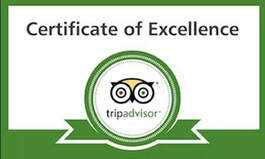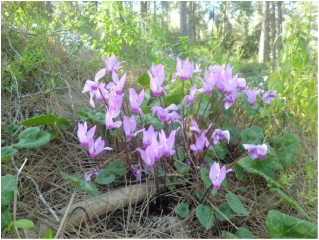
When we travel to northern Israel, there are many must-see sights and must-do activities. There is so much to do that one could spend many vacations in the north and still not see it all.
But what about the hidden secrets? There are many beautiful spots in the Galilee that are serendipitous. All you need is a car and a sense of adventure.
Last Friday, en route to Tsfat for Shabbat, we took a drive up north. Being early March, the rolling hills were verdant green. Red kalaniot and mauve cyclamen formed bright patches on the hillside.
But what about the hidden secrets? There are many beautiful spots in the Galilee that are serendipitous. All you need is a car and a sense of adventure.
Last Friday, en route to Tsfat for Shabbat, we took a drive up north. Being early March, the rolling hills were verdant green. Red kalaniot and mauve cyclamen formed bright patches on the hillside.
We drove to Yodfat, a moshav just south of Karmiel that is nestled on the Atzmon Mountain range. Yodfat, also known as Jotapata, was once a village populated by Jews at the end of the 2nd century BCE. During these times, the Hasmonean kings were broadening their territory northward.
It was a large settlement when, in 67 CE, it was destroyed by the Romans. Josephus Flavius describes the siege in detail in his book The Wars of the Jews. Led by Emperor Vespasian plus by three legions, the Romans battled to overthrow Yodfat, yet were met by resistance.
The Jews held out for 47 days until Yodfat was burned to the ground. It was the month of Tammuz. About 40,000 Jews were killed while 1,200 women and children were captured and enslaved.
Now visitors can walk to the top of a hill were the town once stood and wander around the area. Archeological excavations have uncovered ancient cisterns, part of walls and a mass grave with human remains. Yodfat is a tranquil place where the moshav residents grow flowers. They run a flower bulb nursery that exports millions of bulbs worldwide. In fact, Yodfat has developed anenomes that are hand-pollinated, a first in the business of cut flowers.
It was a large settlement when, in 67 CE, it was destroyed by the Romans. Josephus Flavius describes the siege in detail in his book The Wars of the Jews. Led by Emperor Vespasian plus by three legions, the Romans battled to overthrow Yodfat, yet were met by resistance.
The Jews held out for 47 days until Yodfat was burned to the ground. It was the month of Tammuz. About 40,000 Jews were killed while 1,200 women and children were captured and enslaved.
Now visitors can walk to the top of a hill were the town once stood and wander around the area. Archeological excavations have uncovered ancient cisterns, part of walls and a mass grave with human remains. Yodfat is a tranquil place where the moshav residents grow flowers. They run a flower bulb nursery that exports millions of bulbs worldwide. In fact, Yodfat has developed anenomes that are hand-pollinated, a first in the business of cut flowers.
| If you have a keen eye, look for a hand-written sign that reads חלב עם הרוח in Hebrew. The sign is on the left before you enter Yodfat. Follow a bumpy road up and over hills. You will see a gate and a sign that looks as if one should not enter, but go right on in. The road continues until you see a few stone homes. Park the car and walk in. We first walked past pens where goats were kept. The stalls were beautifully kept and artfully designed with carved wood, hieroglyphic painting and prayer flags. Where were we? It felt as it this were a farm, yet a gallery, a ranch yet a place of spiritual calm. We then entered an outdoor section with several tables set in private dining areas. Pillows were set atop Turkish rugs with flowering wisteria above. The cutlery was wrapped in napkins with a sprig of lavender. This was the organic dairy restaurant. All was run on solar power and the stove was powered by gas. This place was off the grid in many beautiful ways. We spoke to one young woman who was raking the white stones, zen-like. She told us she was a volunteer from Russia and was here several months. There were volunteers here from Germany, the US and Israel. | We were surrounded by hills and mountains yet could not see another settlement. We could hear only the wind and bleating. We walked on and saw two goats separated from the rest and soon realized these goats had just given birth. The newly born babies could barely walk and their proud mothers were cleaning them. We passed a tractor pulling hay and fields of vegetables. Everywhere, volunteers were busily sweeping, weeding and cleaning. We were warmly greeted the owners, Amon and Daliah, who offered us a coffee. Originally from Yodfat, they started the farm and lovingly built every building. Today they produce organic goat cheeses, yogurt, labneh, vegetables, olive oil and wine. Two of their adult children live here and work on the farm. We saw two of their young grandchildren happily playing outside. |
In English, this farm is called Goats with the Wind. It is tranquil, gentle and a world apart. Go for a visit. If it is not spring (goat birthing season), you can buy some fresh cheeses. And if you would like to eat in the restaurant, you must reserve in advance.

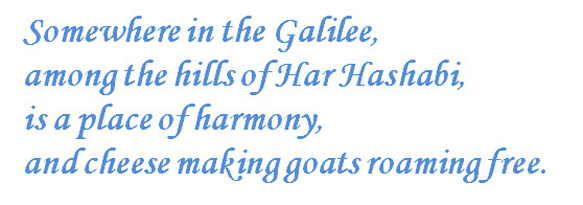
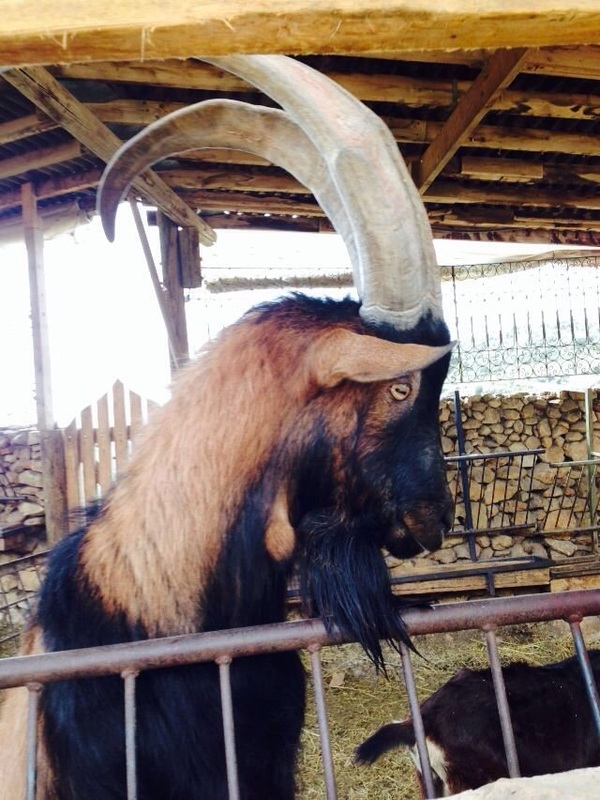
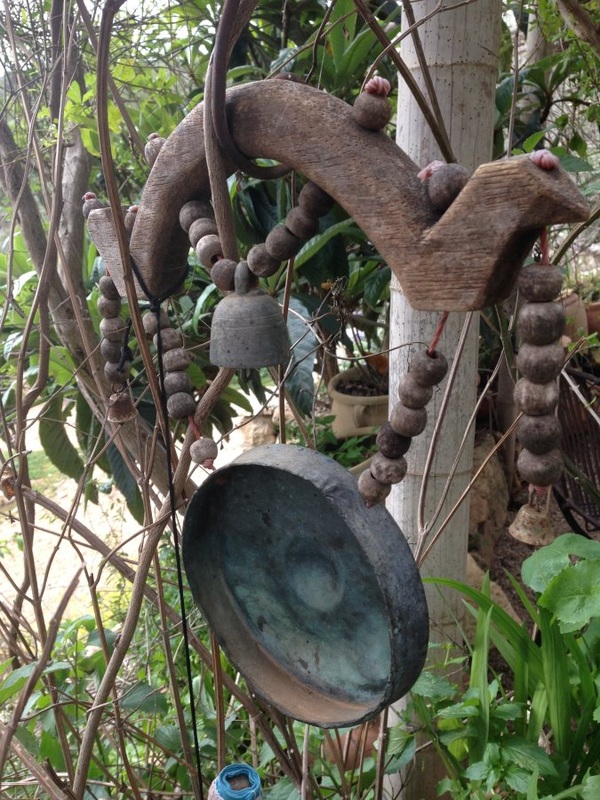
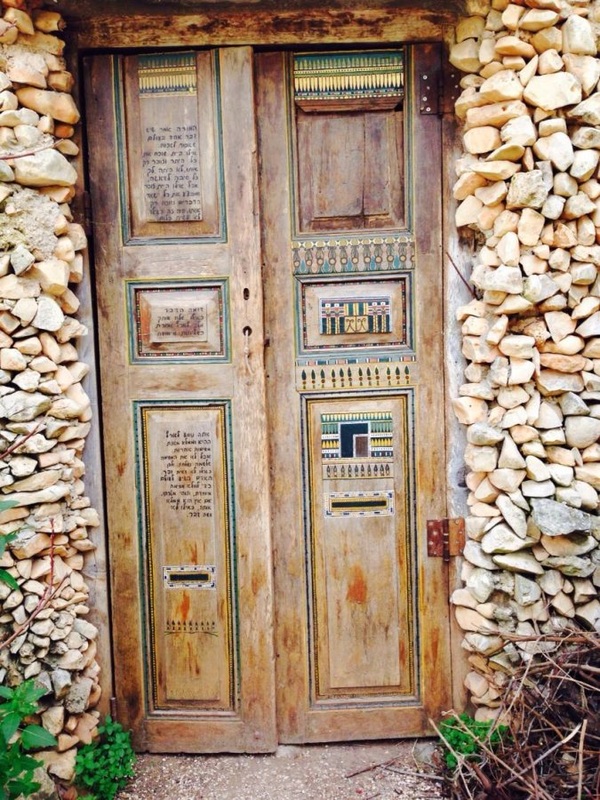
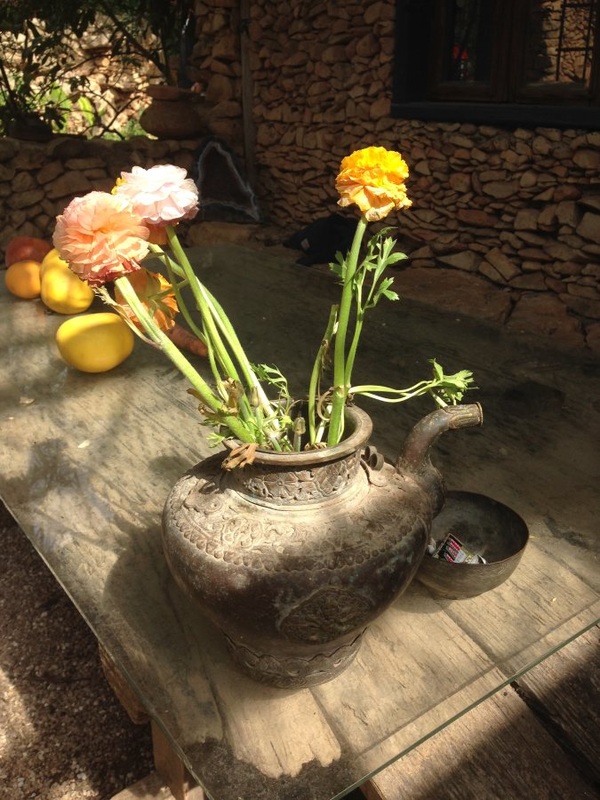
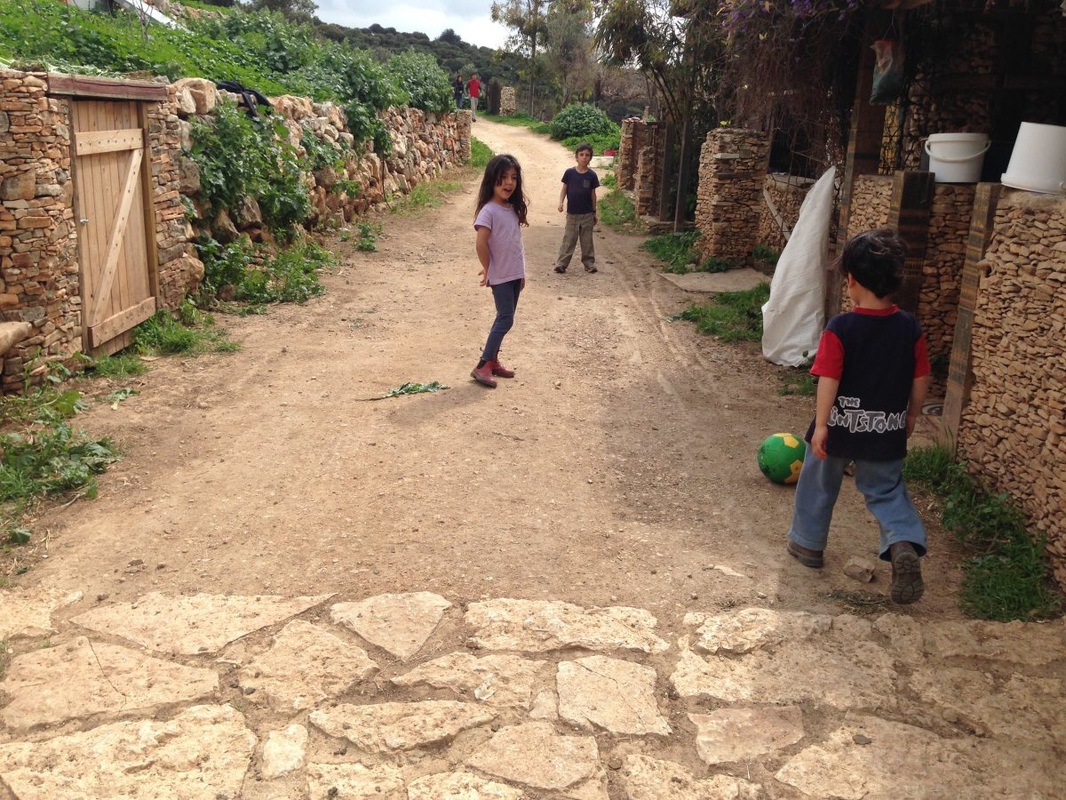
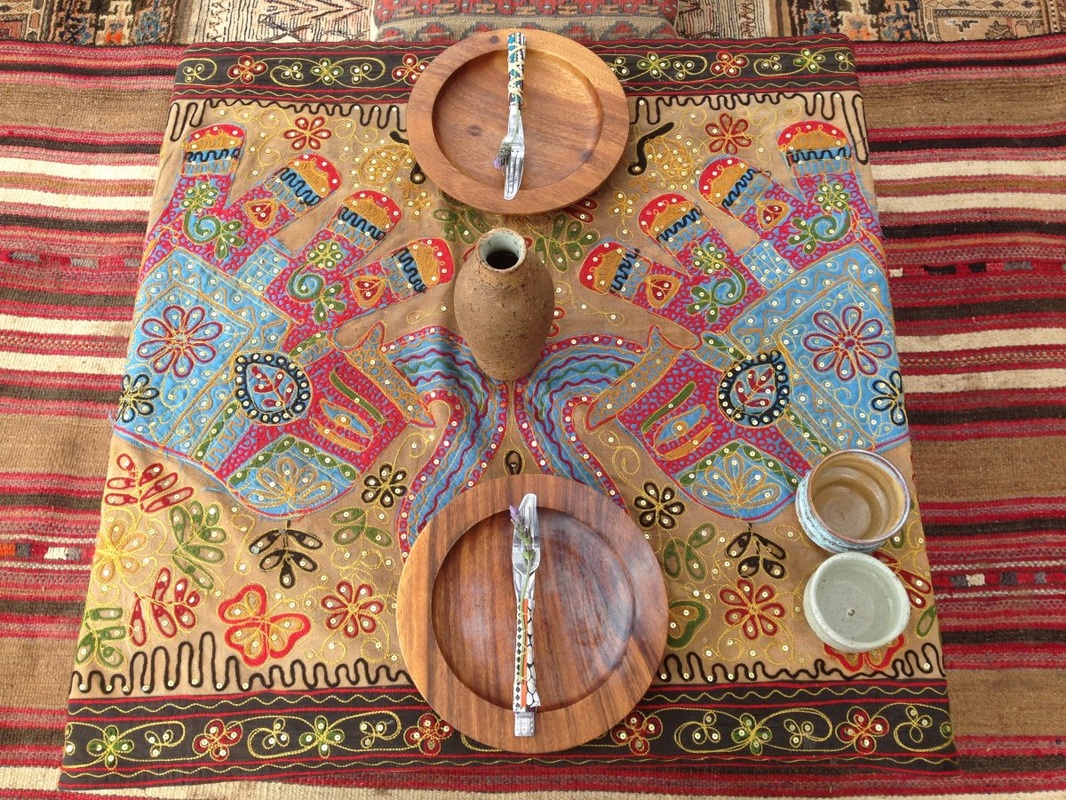
 RSS Feed
RSS Feed


